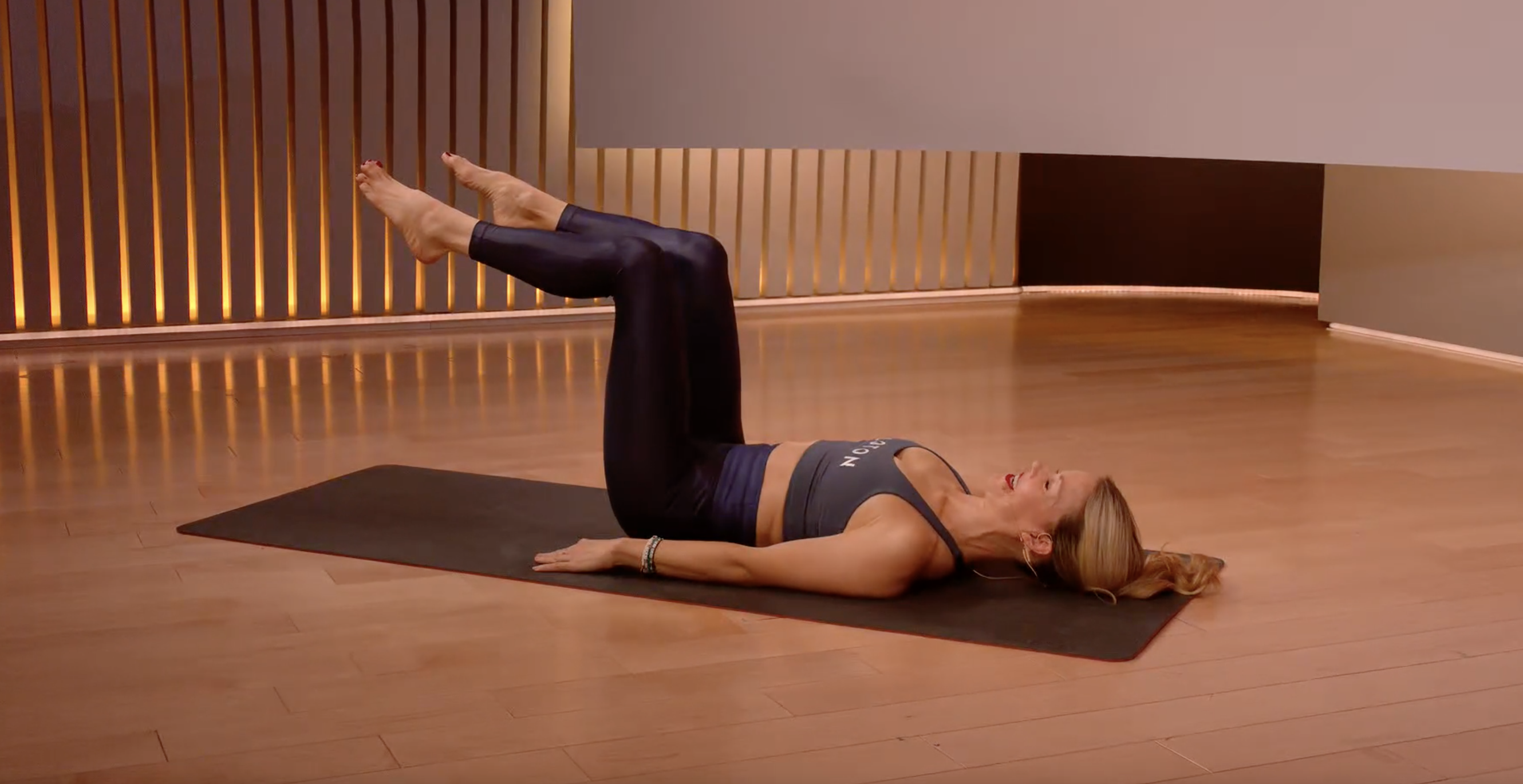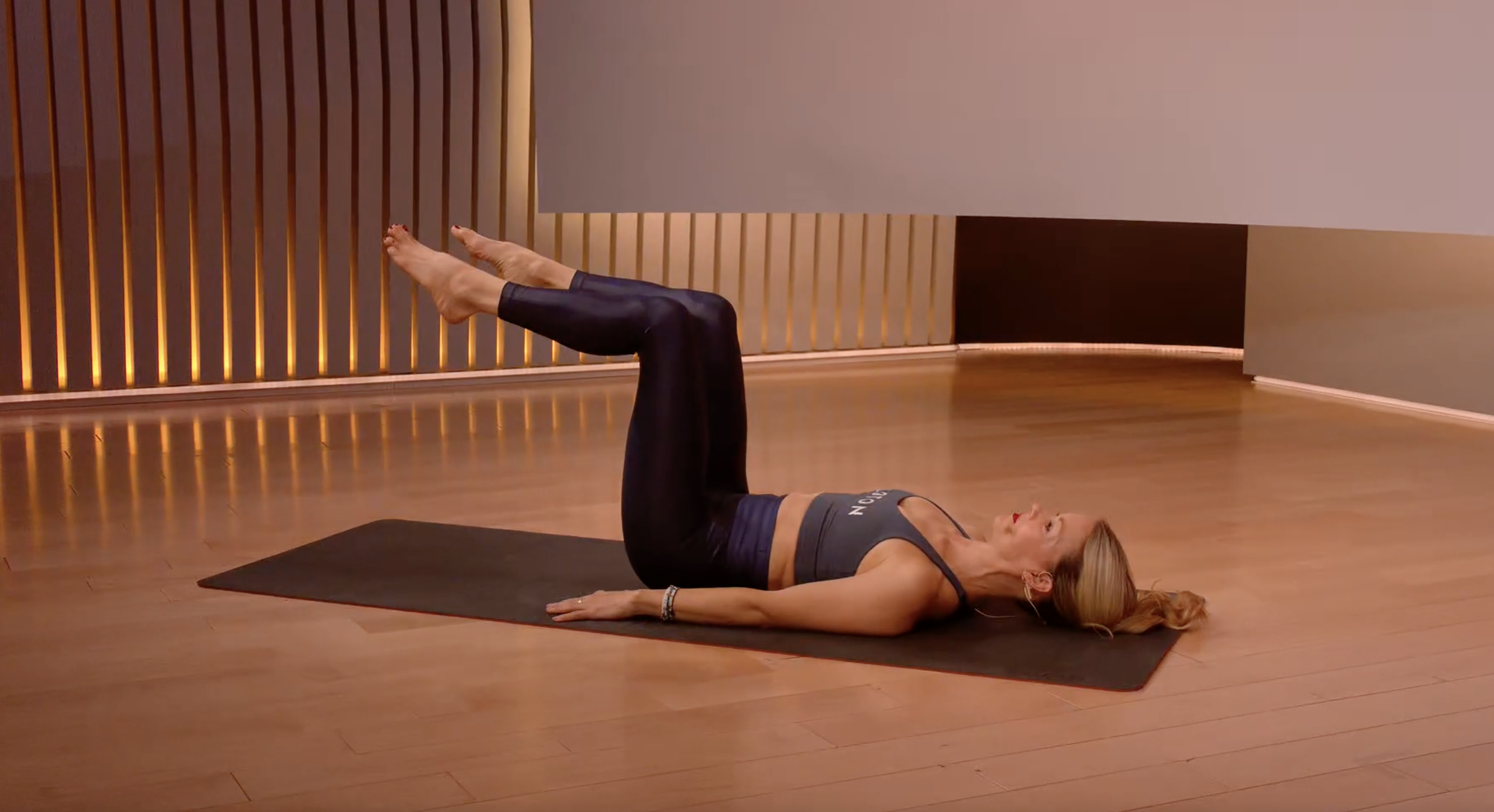
This Classic Pilates Move Works Virtually Every Part of Your Core
And it's surprisingly simple.
By Michele Ross•
What Are Heel Taps?
What Muscles Do Heel Taps Work?
How To Do Heel Taps
Variations and Modifications of Heel Taps
3 Mistakes to Avoid When Doing Heel Taps
How to Incorporate Heel Taps into Your Workout Routine
Not the type to opt into an exclusive core workout class but still want to develop your abdominal muscles? Pilates is a wonderful option since core stabilization and strengthening are central to just about every move in this popular form of fitness.
Discover more ways to reach your goals with Peloton
Heel taps, aka heel raises or heel lifts, are one simple exercise you’ll often find in a mat Pilates routine that’ll target your abs without—pardon the pun—making you want to tap out early from neck strain, difficulty, or exhaustion. (Note: This move shouldn’t be confused with oblique heel taps, aka alternate heel touches or ankle touches, which involve keeping your neck lifted to sway your upper body from one side to the other.)
Ahead, with the help of Peloton instructor Kristin McGee, discover everything worth knowing about heel taps—including why it’s worth including them in your exercise regimen, plus how to do them and modify them for a range of needs.
What Are Heel Taps?
Heel taps involve laying on your back, bringing your legs to tabletop position, and lowering one heel to the mat before bringing that leg back to tabletop and alternating the active leg. While it sounds simple enough, the magic (and the results) rest upon your ability to initiate and maintain movement from your powerhouse core muscles and hips above all.
Again, you may recognize this move if you’ve taken mat Pilates classes before. Yet it’s also common enough to be included in ab-specific regimens and many a personal trainer’s repertoire.
“Heel taps are very accessible to everyone and this is why I like them,” Kristin shares. And yes: This includes Pilates beginners, those new to exercising, and even prenatal and postnatal women (pending their physician’s approval and taking proper modifications and precautions, as we’ll soon cover).
What Muscles Do Heel Taps Work?
“Heel taps work the deep core muscles,” including the transversus abdominis, says Kristin. The transversus abdominis, which wraps around the front to back body and extends between the ribs and pelvis, is the deepest of the six abdominal muscles. Deep core strength is important to help stabilize the spine and support posture, among other functions.
In addition to strengthening the deep core and facilitating spine stabilization, Kristin says that heel taps add mobility to the hips given the lower-and-lift motions.

How To Do Heel Taps
To do heel taps, Kristin offers her how-to as follows:
Lay down on a mat in a supine position.
Lift your legs to tabletop position, with your knees stacked over your hips and your shins parallel to the mat.
On the inhale, slowly and gently tap your right heel to the mat. On the exhale, engage your abdominals (rather than using momentum) to lift your leg back up to tabletop position.
Repeat step three with your left leg and continue to alternate sides with each heel tap.
Aim for 12 to 20 reps across three sets.
Kristin offers keeping a few key pointers to keep in mind as you’re doing heel taps. “Make sure your hips stay stable and your ribs stay soft,” she advises. “Also, make sure you're not folding at the knee joint but reaching the leg out from the hip.”
Variations and Modifications of Heel Taps
Whether you need to taper down the intensity or prefer to rev things up, Kristin shares several ways to modify heel taps.
If you experience neck pain: If you’re anything like me and tend to shy away from certain ab exercises due to neck discomfort, Kristin says that heel taps are unlikely to trigger or exacerbate strains. “The head is flat for this so you shouldn't have neck pain,” she reassures us. Nonetheless, if you prefer or require some extra support, “you can always put a folded up towel or squishy ball under the head to support the neck.”
If you want to take things up a notch: Up for a challenge and want to try out advanced variations of heel taps? “You can vary the breath, you can extend the leg a little further away before tapping the heel, and you can also speed up the tempo,” Kristin shares.
If you’re prenatal: “Lying on your back [during the prenatal period] isn’t recommended, so do it on your forearms,” Kristin suggests.
If you’re postnatal: If you’re trying out this deep core exercise as part of your postpartum fitness regimen, Kristin urges you to take the proper precautions and ask your doctor before starting exercise. “Be very mindful of the range of motion and maybe don't tap the heel all the way down, only lowering the leg half way,” she advises. Per the American Congress of Obstetricians and Gynecologists (ACOG), exercises that strengthen the abs (which include heel taps) are recommended as part of a 20-to-30 minute quota to stay active each day. However, it’s worth clearing your health status and exercise plan with your OB-GYN throughout the entire prenatal and postnatal period.
3 Mistakes to Avoid When Doing Heel Taps
1. Moving Too Fast
There are many “cheats” to finishing up a workout quickly—such as moving at a rapid pace—but this runs the risk of poor form, lackluster results, and even potential injury. If you’re committed to strengthening your abs and exercising with integrity, take the time to see the moves through and perform them mindfully. “Start slowly to really feel the core engage,” Kristin suggests. Trust that the gains will follow.
2. Allowing Your Ribs to Flare Out
“Make sure your front ribs don't splay open as the leg lowers,” Kristin shares. “Keep softening the back ribs into the mat.”
3. Tapping Your Heel by Bending at the Knee
Last but not least, Kristin shares the most common mistake with heel taps and her top tip to avoid making it. “It’s common to see someone drop the calf and tap the heel as opposed to keeping the shape of the leg and arching the leg out from the hip,” she explains. To bypass this, she advises against bending at the knee as you tap your heel down. With this mistake, she warns that you won't get the deep core, which pretty much negates the purpose of doing heel taps at all. With each and every rep, remember to engage your core to lower the leg from the hip.
How to Incorporate Heel Taps into Your Workout Routine
You can very well do heel taps on your own by following Kristin’s instructions above—whether on their own, included in a bodyweight circuit, as part of a greater ab workout, or within your Pilates regimen. To complement heel taps with other core-strengthening, Pilates-inspired moves, Kristin suggests pairing them with the dead bug, hundreds, single-leg stretch, and double-leg stretch.

Peloton App
Access thousands of classes with no equipment needed.
Yet for many people (including the ab-shy folks alluded to above, myself included), it’s easier and more enjoyable to target the abs when such moves are included in fun, dynamic classes. They can keep you motivated while also helping you reach additional fitness-related goals, such as improving mobility, flexibility, and posture. Fortunately, you can access such classes in the comfort of your own home via the Peloton app. “You'll find heel taps in Kristin McGee's Beginner Pilates program as well as many beginner Pilates classes,” Kristin shares.
This content is for informational and educational purposes only and does not constitute individualized advice. It is not intended to replace professional medical evaluation, diagnosis, or treatment. Seek the advice of your physician for questions you may have regarding your health or a medical condition. If you are having a medical emergency, call your physician or 911 immediately.
Level up your inbox.
Subscribe for a weekly dose of fitness, plus the latest promos, launches, and events.
By providing your email address, you agree to receive marketing communications from Peloton.
For more about how we use your information, see our Privacy Policy.











